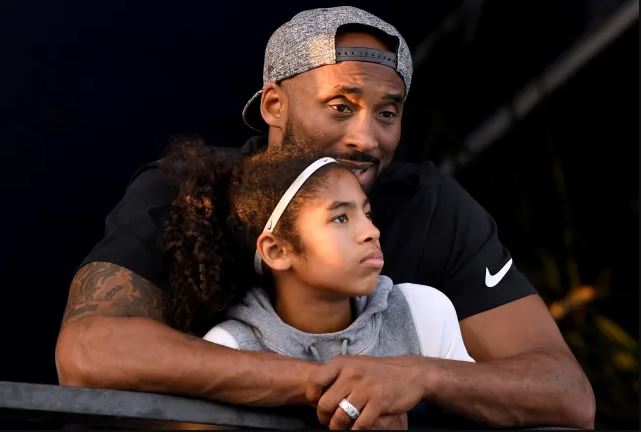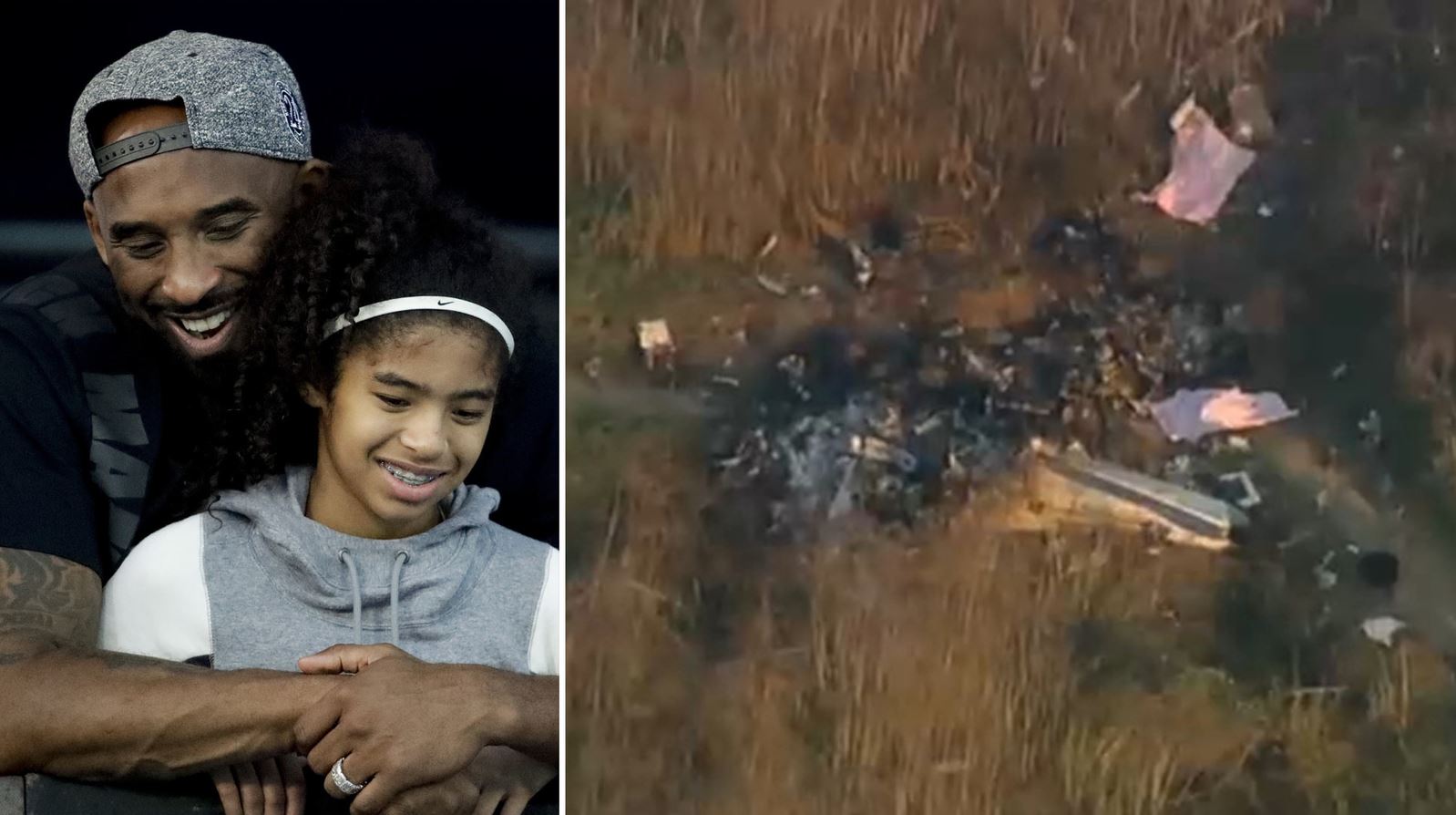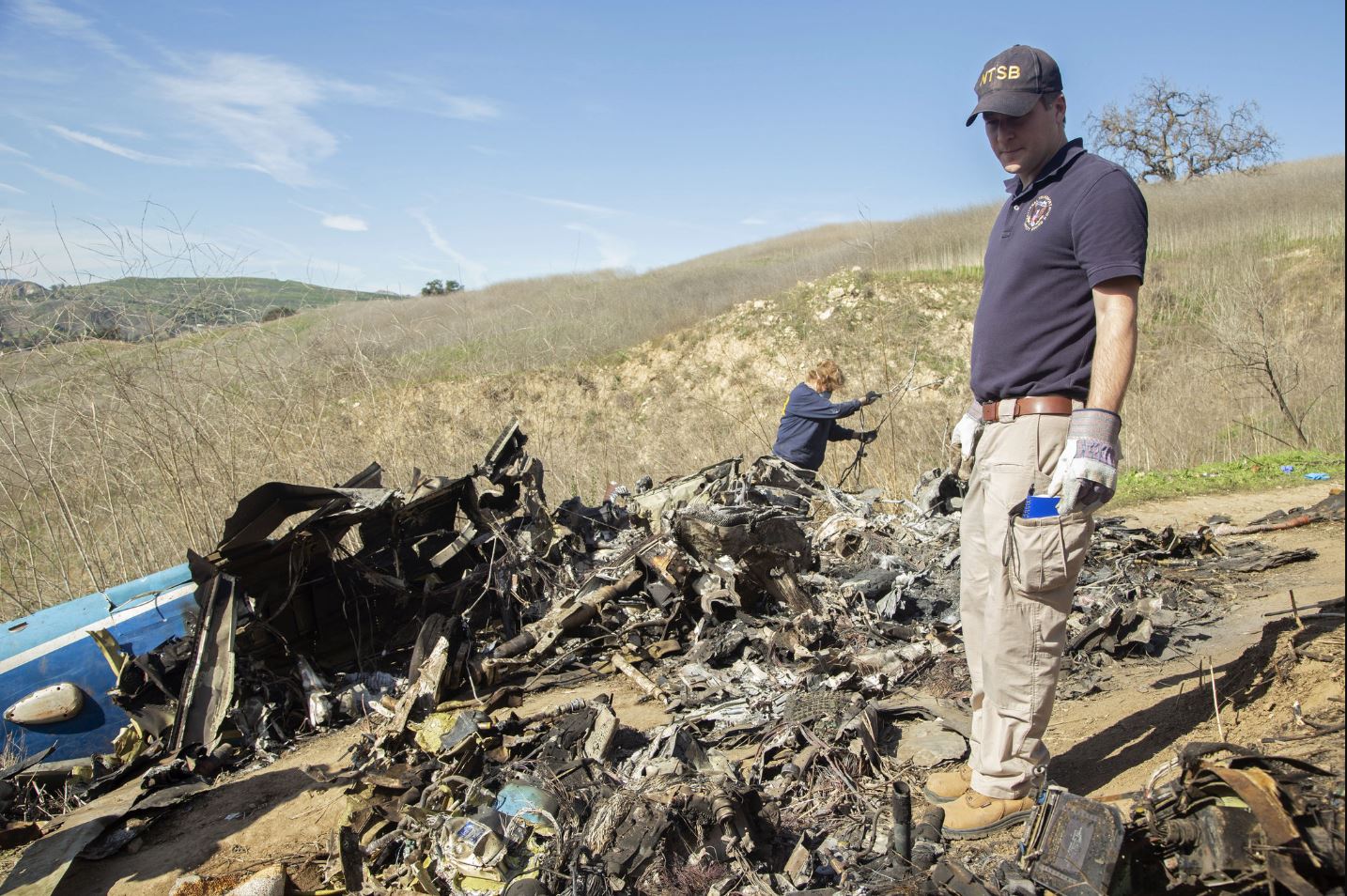Kobe and Gigi Autopsy Report and File PDF Details Released
The world was shaken on a somber January day when news broke of a devastating helicopter crash that claimed the lives of NBA legend Kobe Bryant, his daughter Gianna, and seven others. Recently, the Kobe and Gigi autopsy report and file PDF were released, shedding light on the grim details of their passing. The documents reveal that all victims, including the father and daughter duo, succumbed instantly to blunt trauma, with injuries so severe that survival was impossible. The autopsy also noted that Kobe Bryant had a prescription medication in his system, commonly used to treat ADHD, adding another layer of detail to the tragic narrative.
This release has not only provided closure on the physical causes of their deaths but has also sparked a broader discussion about aviation safety and the responsibilities of charter flight companies. The implications of these autopsy reports are profound, touching on legal, safety, and ethical issues that go beyond the immediate loss of lives. As the public processes this information, the focus shifts to understanding how such a tragedy could occur and what measures could be taken to prevent future incidents.
| Aspect | Description |
|---|---|
| Event | Helicopter crash in January involving NBA legend Kobe Bryant, his daughter Gianna, and seven others. |
| Autopsy Report Details | The report revealed that all victims died instantly from blunt trauma, with injuries so severe that survival was impossible. Kobe Bryant had a prescription ADHD medication in his system. |
| Impact and Discussion | The release of the autopsy reports has provided closure on the causes of death and initiated discussions on aviation safety and the responsibilities of charter flight companies. |
| Broader Implications | The incident touches on legal, safety, and ethical issues, prompting a public focus on preventing such tragedies in the future. |
Contents
The Autopsy Findings File PDF
The autopsy results for Kobe Bryant and the other victims of the tragic helicopter crash were made public, bringing to light the harsh realities of the accident. According to the detailed Kobe and Gigi autopsy report and file PDF, all nine individuals aboard the aircraft suffered instantaneous fatal injuries due to blunt trauma. These injuries included catastrophic brain injuries and severe burns, which were described in the reports as being consistent with a high-impact crash scenario.
Detailed Kobe and Gigi autopsy report and file PDF
kobe-and-gigi-autopsy-report-and-file-pdf (1)
Kobe Bryant’s specific autopsy findings highlighted a series of devastating injuries that were rapidly if not instantly fatal, as per Juan Carrillo, the senior deputy medical examiner who authored the report. The extent of the injuries underscores the violent nature of the crash and the impossibility of survival for those on board. Additionally, the report disclosed that Kobe had methylphenidate in his system—a medication used to treat attention deficit hyperactivity disorder (ADHD) and narcolepsy, indicating it was a prescribed drug rather than a substance abuse issue.
The pilot, Ara Zobayan, was found to have no alcohol or drugs in his system, which has been a critical detail for both the investigation and public discourse. This finding has helped to clarify the circumstances leading up to the crash, focusing attention on other potential contributing factors like mechanical issues or environmental conditions rather than human error related to substance use.
| Aspect | Description |
|---|---|
| Autopsy Results | All nine individuals on board suffered instantaneous fatal injuries due to blunt trauma, including catastrophic brain injuries and severe burns, consistent with a high-impact crash. |
| Kobe Bryant’s Autopsy Findings | Highlighted devastating injuries indicating instant fatality, with methylphenidate in his system, used to treat ADHD, suggesting prescribed use not substance abuse. |
| Pilot’s Toxicology Report | Ara Zobayan, the pilot, had no alcohol or drugs in his system, shifting focus away from human error related to substance use to other potential factors like mechanical issues or environmental conditions. |
| Investigative Focus | The clean toxicology report for the pilot redirects the investigative and public discourse towards examining mechanical failures or environmental factors as potential causes of the crash. |
Circumstances of the Crash
On January 26, 2020, the helicopter carrying Kobe Bryant, his daughter Gianna, and seven others crashed into a hillside in Calabasas, California. The group was en route to a youth basketball game at the Mamba Sports Academy in Thousand Oaks, a journey that tragically never concluded. The crash not only claimed the lives of several community members but also ignited a conversation about the safety of helicopter travel in adverse weather conditions.
Details from the crash report reveal that the Sikorsky S-76 helicopter was flying at approximately 184 miles per hour in a dense fog that significantly reduced visibility. This “blinding fog” was cited as a critical element in the crash, with the pilot potentially disoriented during the flight. The helicopter plunged more than 1,000 feet in about a minute before crashing into the mountainside, resulting in a catastrophic fireball upon impact.

Investigations into the crash by the National Transportation Safety Board (NTSB) initially indicated no signs of mechanical failure, pointing towards environmental factors and decision-making in the cockpit as key areas of focus. The details of the flight conditions and the pilot’s actions in the moments leading up to the accident are central to understanding how such a tragic outcome could have occurred, highlighting the need for stringent adherence to flight safety regulations, especially in poor visibility conditions.
| Aspect | Description |
|---|---|
| Date and Location | January 26, 2020, helicopter crash in Calabasas, California. |
| Victims | Kobe Bryant, his daughter Gianna, and seven others were killed while en route to a youth basketball game. |
| Crash Dynamics | The Sikorsky S-76 helicopter was traveling at about 184 mph in dense fog, which led to visibility issues and potential pilot disorientation. |
| Impact | The helicopter plunged more than 1,000 feet in about a minute, crashing into the mountainside and resulting in a catastrophic fireball upon impact. |
| Investigation | The NTSB indicated no mechanical failures, focusing on environmental factors and cockpit decision-making as key areas. |
| Safety Discussions | Highlighted the need for strict adherence to flight safety regulations, particularly in adverse weather conditions. |
Immediate Aftermath and Victim Identification
The aftermath of the helicopter crash that resulted in the tragic loss of Kobe Bryant, his daughter Gianna, and seven others was a scene of chaos and devastation. The crash site, located on a rugged hillside in Calabasas, was strewn with debris and engulfed in flames when first responders arrived. The severe impact of the crash disintegrated the helicopter, making initial efforts to secure the site and identify the victims extremely challenging.
Rescue teams worked tirelessly in the difficult terrain to recover the bodies. Due to the catastrophic nature of the injuries, identification of the victims was reliant on forensic methods. The coroner’s office utilized dental records and, in some cases, DNA testing to confirm the identities of the deceased. The findings from these identifications were crucial in informing the families and the public while providing closure to the bereaved.

The initial investigation by the coroner’s office quickly ruled out any survival possibility, confirming that the cause of death for all on board was blunt trauma. These findings were consistent with the nature of the crash and were critical in setting the stage for further investigative efforts to determine the sequence of events leading up to the accident.
| Aspect | Description |
|---|---|
| Scene Description | The crash site was located on a rugged hillside in Calabasas, strewn with debris and engulfed in flames, complicating initial recovery efforts. |
| Rescue Operations | Rescue teams worked in difficult terrain to recover bodies; identification was challenging due to the severe impact and required forensic methods such as dental records and DNA testing. |
| Identification Process | The coroner’s office used dental records and DNA testing to confirm the identities of the victims, providing crucial information and closure to families. |
| Coroner’s Initial Findings | Confirmed that the cause of death for all victims was blunt trauma, ruling out any possibility of survival. |
| Impact on Investigations | The findings set the stage for further investigative efforts to determine the sequence of events leading up to the crash. |
Legal and Public Response
The legal ramifications of the crash were swift, with Vanessa Bryant, Kobe’s widow, filing a lawsuit against the helicopter’s owner, Island Express Helicopters. The lawsuit, which also named the deceased pilot Ara Zobayan, alleged negligence by failing to properly monitor and assess the weather conditions and by not aborting the flight given the foggy conditions. The 72-page legal document depicted the pilot’s actions and the company’s oversight policies as “wanton, willful, callous, reckless and depraved.”
Island Express Helicopters responded to the lawsuit by arguing that the passengers, including Kobe and Gianna Bryant, were aware of the risks involved in flying under such conditions, labeling the crash as an “act of God.” This defense pointed to a legal strategy based on the assumption of risk, potentially absolving the company of liability by suggesting that the victims voluntarily accepted the danger inherent in their decision to fly that day.
The public reaction to the tragedy and the ensuing legal battles was deeply emotional and widespread. Kobe Bryant was an international sports icon whose influence transcended basketball, and his sudden death was a significant cultural event. The renaming of the MAMBA Sports Academy, removing “Mamba” from its title, reflected a sensitivity to the association of the nickname with the pain of loss felt by his family and fans around the world. This decision was just one example of the numerous ways in which communities and organizations sought to honor his legacy while respecting the grief of those closest to him.
In the broader context, the crash not only led to mourning but also sparked discussions about celebrity privacy, the safety standards of private helicopter travel, and the responsibilities of charter flight operators to ensure the safety of their passengers. The tragedy thus remains a focal point for debates on safety regulations and the ethical considerations of operating transport services under risky conditions.
| Aspect | Description |
|---|---|
| Lawsuit Filed | Vanessa Bryant filed a lawsuit against Island Express Helicopters and pilot Ara Zobayan, citing negligence for not properly assessing weather conditions and continuing the flight in fog. |
| Company’s Defense | Island Express Helicopters claimed the crash was an “act of God” and argued that the passengers, including Kobe and Gianna Bryant, assumed the risks of flying in such conditions. |
| Public Reaction and Cultural Impact | The tragedy deeply affected fans worldwide, influencing the renaming of the MAMBA Sports Academy and impacting global discussions on celebrity, privacy, and safety in private helicopter travel. |
| Safety and Ethical Discussions | The crash sparked debates about the safety standards of private helicopter operations and the responsibilities of charter flight companies in managing risk. |
Investigation and Safety Concerns
The investigation into the tragic helicopter crash that claimed the lives of Kobe Bryant, his daughter Gianna, and seven others has been a focal point for both the National Transportation Safety Board (NTSB) and the aviation community at large. The NTSB’s thorough inquiry aimed to dissect every possible contributing factor, from mechanical failures to pilot decision-making and environmental conditions. Preliminary reports from the NTSB indicated that there were no signs of mechanical failure on the Sikorsky S-76 helicopter. This shifted the focus of the investigation towards operational and environmental aspects, particularly the decision to fly in extremely foggy conditions, which likely impaired the pilot’s ability to navigate safely.
This tragic event has spurred a broader discussion on helicopter safety, highlighting the need for more stringent regulations, especially concerning flight under adverse weather conditions. The aviation industry is now scrutinizing current policies on visual flight rules (VFR) and considering more rigorous standards for flight clearance and pilot training. This could involve enhanced simulation training for pilots, focusing on adverse weather navigation, and possibly mandating more advanced onboard safety technologies like Terrain Awareness and Warning Systems (TAWS), which might have prevented the crash by alerting the pilot to the hillside’s proximity.

There is also an ongoing debate about the necessity of requiring helicopters, especially those used in charter services, to be equipped with black boxes. These devices, which record flight data and cockpit conversations, are not currently mandatory for helicopters as they are for commercial airplanes. Implementing such a rule could significantly improve investigation capabilities and future safety measures, making it easier to understand the dynamics of any crash and to prevent similar tragedies.
| Aspect | Description |
|---|---|
| NTSB Investigation Focus | Investigation concentrated on operational and environmental factors, particularly the decision to fly in foggy conditions, after ruling out mechanical failures on the Sikorsky S-76 helicopter. |
| Safety Discussions | The crash spurred discussions on helicopter safety, including the need for more stringent regulations and improvements in pilot training and safety technologies. |
| Potential Safety Enhancements | Consideration of enhanced simulation training for pilots, the possible mandate for Terrain Awareness and Warning Systems (TAWS), and more rigorous flight operation standards. |
| Debate on Black Boxes | Ongoing debate about the necessity of requiring black boxes in helicopters, which would aid in crash investigations and future safety measures. |
The impact of the helicopter crash that led to the untimely deaths of Kobe Bryant, his daughter, and other passengers has resonated deeply within the community and across the global sports landscape. Kobe was more than just an iconic basketball player; he was a mentor, philanthropist, and family man whose influence reached far beyond the basketball court. His death, therefore, elicited a profound response not only from fans but from anyone familiar with his career and charitable work. The community’s and the sports world’s reaction—ranging from tributes at NBA games to memorials at the crash site—reflects the breadth of his impact.
As the legal and safety discussions continue to unfold, they serve as a stark reminder of the importance of diligence and precaution in aviation. The ongoing lawsuit initiated by Vanessa Bryant against the helicopter company has brought to light significant concerns about operator responsibility and passenger safety, potentially setting precedents for how similar cases are handled in the future. Additionally, this tragedy has sparked a critical reevaluation of helicopter travel safety standards, which could lead to more robust regulations aimed at preventing such accidents.
Reflecting on this tragic event, it becomes clear that while the sports world and Kobe Bryant’s community have lost a legendary figure, the lessons drawn from this incident can lead to improved safety standards and protocols. This could be the lasting legacy of the victims—helping ensure that the circumstances leading to their deaths are meticulously understood and addressed, thus safeguarding future lives in the realm of aviation.
Global News -Zion Foster Autopsy Report Implications in the Murder Trial
The Best Advice Original Video (El Mejor Consejo Video Original)
The Leatherface Mexican Video Original Its Impact on Society
Giovanna Plowman Original Video to Resurgence in 2023
Chico Pereira is Asleep Original Video (Chico Pereira Está Dormido Video Original)
Maria Camila Villalba Original Video on Safety and Digital
Shocking Footage Pool Dive Gone Wrong Video Original Results
